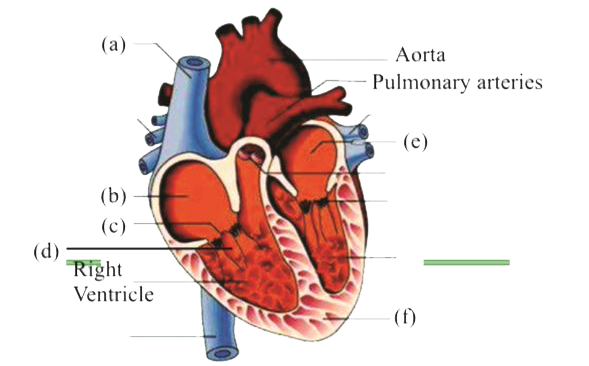Briefly describe the followings
(a) anaemia
(b) angina pectoris
( c) atherosclerosis
(d) hypertenswn
(e) heart failure
(f) erythroblastosis foetalis
(a) Anaemia is the decrease in the number of RBC than the normal amount and also due to less quantity of haemoglobin than the normal value in blood This is the most common disorder of the blood.
(b) Angina Pectoris Ocurs when there is blockage in coronary artery. thus in sufficient supply of blood reaches to heart muscles. This results in chest pain, fear, anxiety. pale skin, profuse sweating and vomitting. The anginai pain usually starts in the centre of the chest spreads down to the left arm which last for only few second.
(C) Atherosclerosis is the deposition of cholesterol in the inner lining of arteries called atherosclerotic plaque. Sometimes arteries are completely blocked, this result in stroke or heart attack.
(d) Hypertension Ps sometimes also called as arterial hypertension. The blood pressure in the arteries getselevated. ‘It could be primary hypertension which has no obvious medical reason but secondary hypertension are caused by various conditions which affect kidneys. arteries heart or endocrine system.
(e) Heart Failure is the state of heart when it does not pump blood effectively enough to meet the needs of the body.
(f) Erythroblastosis foetalis is a haemolytic disease of new borns which is an allo-immune condition that develops in foetus when igG molecules produced by mother pass through placenta and attack RBC causing reticulocytosis and anaemia. It develops due to Rh incompatibility between the couples.
In a man with blood and women with blood the second pregnancy foetus may have this problem due to IgG accumulation in women during first child development
Topper's Solved these Questions
- BOOK - NCERT EXEMPLAR ENGLISHCHAPTER - Body Fluids and Circulation EXERCISE - LONG ANSWER TYPE Q5videos
Body Fluids and Circulation
- BOOK - NCERT EXEMPLAR ENGLISHCHAPTER - Body Fluids and Circulation EXERCISE - VERY SHORT ANS.TYP.Q12videos
Body Fluids and Circulation
- BOOK - NCERT EXEMPLAR ENGLISHCHAPTER - BIOMOLECULES EXERCISE - Long Answer Type Questions5videos
BIOMOLECULES
- BOOK - NCERT EXEMPLAR ENGLISHCHAPTER - BREATHING AND EXCHANGE OF GASESEXERCISE - SATQ7videos
BREATHING AND EXCHANGE OF GASES
Similar Questions
Knowledge Check
- Question 1 - Select One
If ab=cd=ef=34, what is the value of a+c+eb+d+f?
Aa) 9/16Bb) 3/4Cc) 2/3Dd) 4/5
Describe briefly (a) Catalytic converter (b) Defunct ships (c) e-wastes.
View SolutionDescribe briefly the following:
(a) Origin of replication.
(b). Bioreactors.
(c). Downstream processing.View SolutionIn the following diagram of section of a human heart, label a, b, c, d, e and f.
 View Solution
View SolutionDescribe briefly:
(a) Arithmetic growth
(b) Geometric growth
(c) Sigmoid growth curve
(d) Absolute and relative growth ratesView SolutionThe disease caused due to cigarette smoking and blockage of blood supply to heart muscle respectively are :
(a) Angina and coronary artery disease
(b) Heart failure and goitre
(c) Diabetes and angina
(d) Emphysema and atherosclerosisView SolutionIn a single throw of a die describe the following events: A∪B, A∩B, B∩C, E∩F, D∩F and F
View SolutionThe diagonal BD of a parallelogram ABCD intersects the segment AE at the point F, where E is any point on the side BC . Prove that DF⋅EF=FB⋅FA.
View Solution

